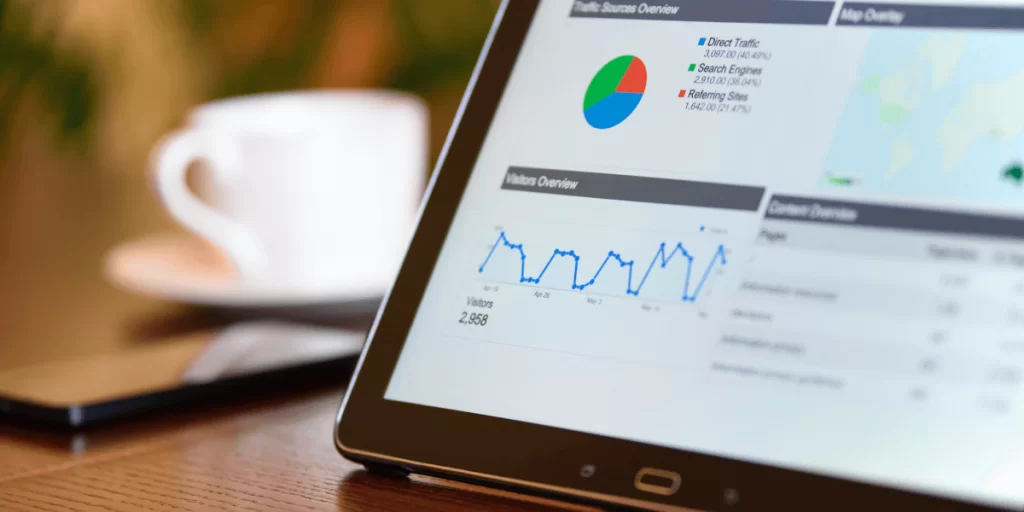In today’s fast-paced digital world, website performance is more important than ever. Slow loading times, broken links, or poor user experiences can drive visitors away and harm your search engine rankings. If you want to improve your website’s performance and ensure it provides the best possible experience for your users, optimizing various elements is key.
In this blog, we’ll share 10 essential tips for optimizing your website’s performance, helping you increase speed, enhance user experience, and boost SEO.
1. Choose a Reliable Web Hosting Provider
The foundation of any website’s performance is the web hosting provider you choose. A slow or unreliable hosting service can lead to slow load times and downtime, which negatively impacts both user experience and SEO rankings.
What to do:
-
Opt for a quality provider: Look for a hosting provider like MetaHost Web that offers high uptime guarantees and fast load speeds.
-
Consider the hosting type: Shared hosting is cheaper but slower, while VPS and dedicated hosting offer more resources and speed for growing websites.
Tip: If you’re experiencing slow load times, upgrading to a higher-performance hosting plan can make a noticeable difference.
2. Optimize Image Sizes
Large image files can drastically slow down your website. They take longer to load, especially on mobile devices with slower internet connections.
What to do:
-
Compress images: Use image compression tools like TinyPNG or ImageOptim to reduce file sizes without losing quality.
-
Use the right format: JPEGs are great for photographs, while PNGs work well for images that require transparency. Consider WebP format for better compression.
Tip: Ensure images are not larger than necessary, and only use high-resolution images for key visual elements.
3. Enable Caching
Caching stores copies of your site’s files (such as HTML, CSS, and JavaScript) in the user’s browser, so they don’t need to be reloaded each time they visit your site. This can significantly speed up your website, especially for repeat visitors.
What to do:
-
Enable browser caching: Configure your server to store static files in the browser cache for a set amount of time.
-
Use caching plugins: WordPress users can use plugins like W3 Total Cache or WP Super Cache to manage caching.
Tip: Caching can dramatically improve load times, especially for returning visitors.
4. Minimize HTTP Requests
Each time a user visits your website, their browser makes HTTP requests to download your site’s resources, such as images, scripts, and CSS files. The more requests your site makes, the slower it will load.
What to do:
-
Combine files: Combine your CSS and JavaScript files to reduce the number of requests. Use CSS sprites to combine multiple images into one.
-
Limit third-party scripts: Minimize the use of third-party resources like social media widgets, ads, and analytics tools.
Tip: Reducing HTTP requests will reduce your page’s load time and improve performance.
5. Use a Content Delivery Network (CDN)
A Content Delivery Network (CDN) is a network of servers distributed around the world that store copies of your site’s static resources. By serving these resources from a server close to the user’s location, CDNs help speed up load times.
What to do:
-
Implement a CDN: Use services like Cloudflare or KeyCDN to cache your site’s content on multiple servers.
-
Optimize CDN settings: Configure your CDN to optimize caching rules and delivery.
Tip: A CDN is especially beneficial for sites with international audiences, as it speeds up loading times globally.
6. Enable Gzip Compression
Gzip compression reduces the size of your website’s files, such as HTML, CSS, and JavaScript, by up to 70%. This leads to faster load times, especially for users on slower connections.
What to do:
-
Enable Gzip: Configure your server to automatically compress these files before sending them to the browser.
-
Use online tools: Use online tools like GIDNetwork’s Test to ensure that Gzip is enabled on your website.
Tip: Most modern browsers support Gzip compression, making it a simple and effective way to boost performance.
7. Optimize Your Website’s Code
Bloated, inefficient code can slow down your website significantly. Minimizing and optimizing your code ensures that your site loads quickly and functions efficiently.
What to do:
-
Minify CSS, JavaScript, and HTML: Use tools like Minify or UglifyJS to remove unnecessary spaces and characters.
-
Clean up unnecessary code: Remove any unused CSS or JavaScript files from your site.
Tip: Streamlining your website’s code not only improves speed but also makes it easier to maintain.
8. Implement Lazy Loading
Lazy loading is a technique where images and other elements are only loaded when they are about to appear on the user’s screen. This reduces the initial load time of your website, especially for pages with lots of images or videos.
What to do:
-
Use lazy loading plugins: For WordPress, plugins like Lazy Load by WP Rocket automatically enable lazy loading for images.
-
Implement lazy loading for videos: You can use JavaScript to delay the loading of video content until the user scrolls to the relevant section.
Tip: Lazy loading can greatly improve the performance of content-heavy websites without compromising user experience.
9. Reduce Redirects
Each time a page redirects to another page, it adds an additional HTTP request, slowing down the load time. Excessive redirects, especially on mobile, can be a major bottleneck for your website’s performance.
What to do:
-
Limit redirects: Only use redirects when absolutely necessary, such as during URL changes or migrations.
-
Fix broken links: Use tools like Screaming Frog SEO Spider to identify and fix redirects and broken links.
Tip: Reducing unnecessary redirects improves site speed and ensures a smoother experience for visitors.
10. Monitor Your Website’s Performance Regularly
Website performance is not a one-time fix. It’s important to monitor your website regularly to identify any new issues that could slow it down.
What to do:
-
Use performance monitoring tools: Tools like Google PageSpeed Insights, GTmetrix, and Pingdom provide detailed reports on how to improve your site’s performance.
-
Review server logs: Check your hosting provider’s server logs for any performance-related issues or errors.
Tip: Regular performance checks allow you to stay on top of potential issues and ensure that your website continues to run efficiently.
Conclusion
Optimizing your website’s performance is essential for providing a better user experience, improving SEO rankings, and increasing conversions. By following these 10 essential tips, you can ensure that your website loads quickly, runs efficiently, and provides a smooth experience for your visitors.

